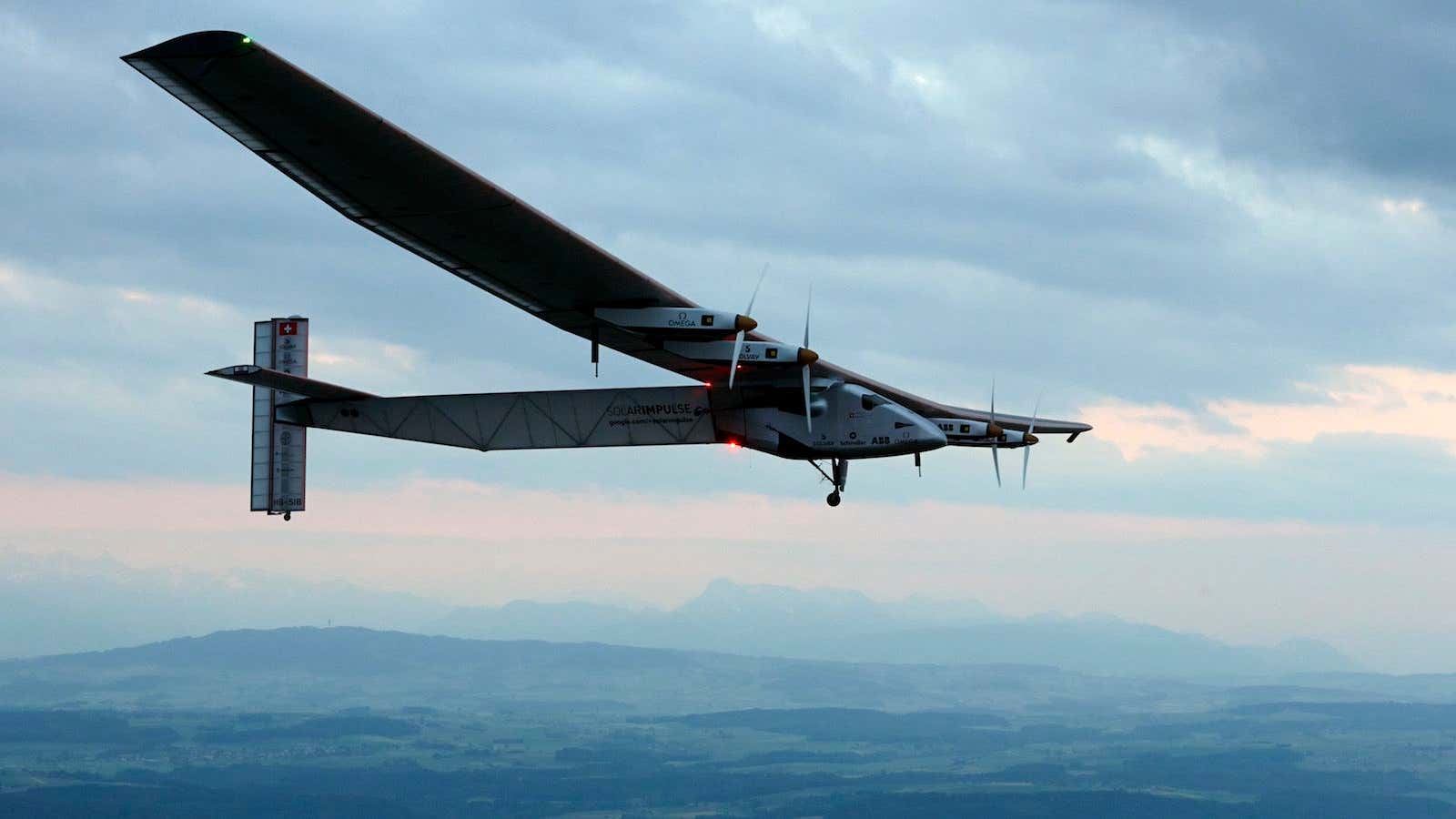Bertrand Piccard had plenty of inspiration for building the world’s first solar airplane. Not only did he pilot the first around-the-world balloon flight in 1999, his father helped design the submarine that became the first to plunge undersea to hit the earth’s surface, and his grandfather rode the first air balloon into the stratosphere in 1931.
Now, after years of testing prototypes and rounding up funds from companies like SwissCom, Toyota, ABB, and Omega, Piccard’s vision has become a reality: The Solar Impulse 2, the world’s first solar-powered airplane fueled completely by sunlight, is prepping for its first around-the-world flight.
The plan, to be executed by piloting hobbyist Piccard and the project’s co-pilot and lead engineer André Borschberg, is to fly the plane on a 12-leg, multi-week flight starting in March, powered by nothing but sunlight. The routes: from Abu Dhabi over the Arabian Sea, India, Myanmar, China, the Pacific Ocean, the US, the Atlantic Ocean, and southern Europe or North Africa, and then back to the UAE. The trip could take five months or more, depending on weather, which needs to be sunny enough during daytime hours to charge the plane’s lithium batteries to last through the night, a spokesperson for the Solar Impulse 2 told Quartz.
The Solar Impulse 2 was preceded by an earlier prototype, which took flight across the US last year and set a 26-hour record in 2010. The Impulse 2’s 236-foot (72 meter) wingspan—longer than that of a Boeing 747 and the earlier prototype—minimizes drag and adds more surface area for solar cells.
The planes unheated, unpressurized cockpit fits one pilot and doubles as a toilet and nap pod. Piccard and Borshberg will be conducting mandatory landings every few days to take turns flying.
Its maximum cruising altitude of 27,000 ft is only slightly lower than the 30,000-40,000 ft altitude of most commercial airplanes. Its speed, however, is more comparable to a sports car than a commercial plane; it can fly at 90 kilometers per hour at sea level and 140 kilometers per hour at maximum altitude.
Piccard has said that, rather than becoming a prototype for other solar planes, the Solar Impulse 2 should be a source of inspiration for sustainable design.
Check out this GoPro video of the outside and interior of the plane:
